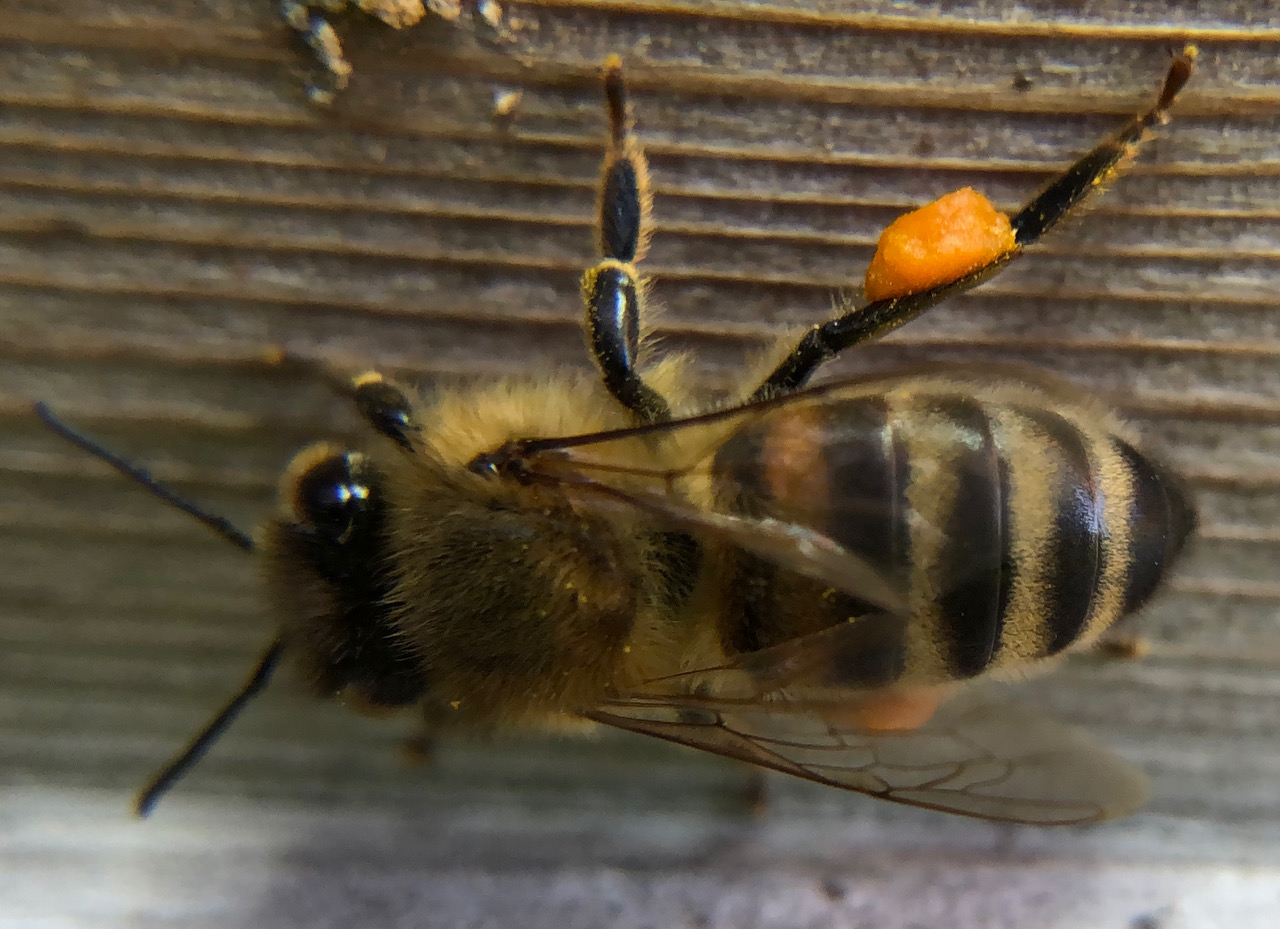Bee Blog - March 2021
This month's update from local beekeeper Gerald Bushby
What a difference a month makes. My photograph last month showed my apiary still in the grips of winter, snow on the hive roofs and landing boards and the bees tucked away in the hives behind the mouse guards on the entrance. Now spring seems to have sprung. The snow has gone away to be replaced at the end of February by several days of clear blue skies often with warm air drifting up from the continent. Nights have been cold with frosts but during the daytime temperatures have lifted into double figures.
Beekeepers are always keen to see what condition their colonies are in after the winter but, as regular readers will know, we are always cautious not to look into the hives too soon before the temperature has risen to an acceptable level. Curiosity has to be balanced against the possible damage to the queen that a sudden drop in temperature may cause.
In reality it is a little more important than mere curiosity. This can be one of the most dangerous times of years for the bees. If they have survived the winter food will certainly be running low and and a very early warm period will encourage the bees to move into spring mode before nectar and pollen bearing flowers have started to bloom.
A few days ago however the weather was so pleasant that I decided it was time to have a quick look into the hives. It was warm, the sun was shining and bees were emerging from all of the hives in some numbers. This is always the first good sign, some bees had survived the winter in all of the four hives. Even better than that I could see that some of the bees were returning having collected pollen. My photograph this month shows one of the “girls” returning to the hive having collected two loads of bright orange pollen on her back legs. This is usually a sign that the queen has also survived and has started to lay eggs ready for the spring.
Readers will probably remember that I had decided to do things differently last autumn by leaving a super of honey on each hive as additional feed for the bees during the winter. In earlier years I had not done this but had relied on feeding fondant. Many beekeepers feel the bees own honey is more natural and therefore best for the bees. A disadvantage however is that it is much more difficult, and more invasive, to try to monitor whether the honey in the supers runs out during the winter. With the fondant, in a small container just above a cover board on the top of the brood, it is very easy to quickly remove the top of the hive at any time over winter to see if it has run out, without letting much cold air in, and replace it if necessary.
Like most things in live, there is no ideal solution to the winter feeding problem. My inspection found that the honey stores on two of the hives was very low and on the verge of running out but in the other two, the hives has sufficient stores. I was able therefore to remove the near empty supers on two of the hives and replace them with a feeder containing a 1:1 mix of sugar and water. All of the hives should now have sufficient stores to keep them going until the spring flowers emerge.
I have removed the mouse guards from the hive entrances but it is still too early to look into the body of the hive and check on the queens.
All in all however, it’s a good news month. Spring is my favourite time of year in any case, but especially this year. I have had my first corona virus inoculation, I have had my regular 8 week bee immunotherapy inoculation, the sun is shining, the birds are singing, the flowers are budding and the bees are buzzing. Another beekeeping season has started.
